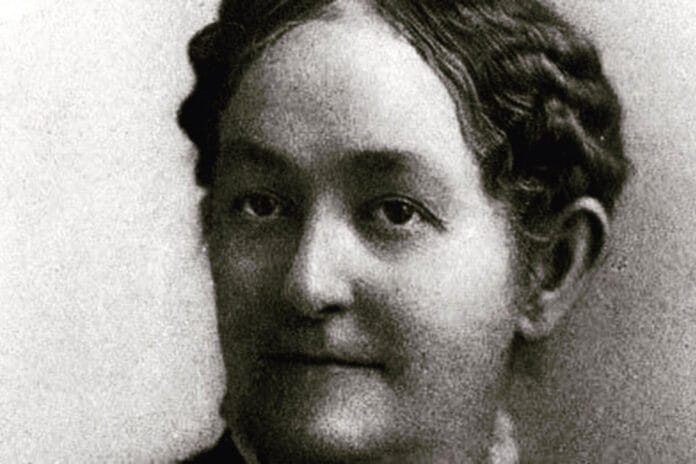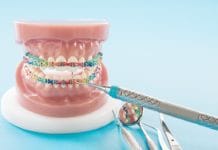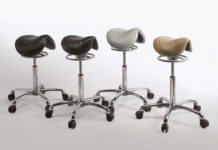Dentistry is an integral part of our overall health, and the profession has gained recognition for its contributions during the last three centuries. In the 20th century, women in dentistry had increasingly become the profession’s primary caregivers. In a once male-dominated profession, women now make up roughly 48% of practicing dentists and 95% of practicing dental hygienists and assistants.1,2
The rise in numbers can be attributed to a few important women who pioneered the path for females entering the dental profession.
Introduction to Dentistry
Dentistry began in the 1630s when settlers of the Massachusetts Bay Colony arrived in America and were accompanied by barber surgeons. In 1763, John Baker, an English surgeon residing in Boston, is recognized as one of the first dentists in America. During the 19th century, the United States was the leading “Center for the World of Dentistry.” 3 However, up until the mid-19th century, dentistry was a male-dominated profession, partially because the premise was that women were perceived as “the property of their husbands” until the mid-1800s.4
However, in the mid-19th century, women were first introduced into the profession of dentistry and have grown in numbers over the years. During a time when women wanted to work outside the home, partially due to the changing socio-economics of America in the second half of the 19th century, the field of dentistry was still begrudgingly “off-limits” to this new group of women because of the premise that women belonged in the home. However, women eventually broke through the glass ceiling in dentistry and sought education through hands-on apprenticeship until the mid-1800s when the first woman was admitted to a dental school.
Emiline Roberts Jones
Emiline Roberts Jones, known as the first woman dentist, was born in 1836 and was married at age 18 to Dr. Daniel Jones, a practicing dentist in Connecticut. Emiline’s exposure to dentistry through her husband’s dental practice sparked her interest in dentistry.
However, due to her husband’s disapproval of her interest in the dental sciences, she was forced to practice secretly by “tending to the teeth of numerous residents of northeast Connecticut in the years prior to the Civil War.” 5 Dr. Jones felt that dentistry was not an acceptable occupation for a woman because of a woman’s “frail and clumsy fingers.” 5 Emiline divulged her secret to her husband by showing him the jar of extracted and filled teeth she had performed.6 Reluctantly, in 1855, her husband invited her to assist him at his practice, and this led to her becoming a full partner in 1859.5
After her husband’s death in 1864, Emiline was left to care for their two children. She then traveled to eastern Connecticut and Rhode Island with a portable dental chair, treating patients to provide income for her family. In 1876, she settled in Rhode Island and founded a successful dental practice until she retired in 1915.5 Prior to her retirement, she was proclaimed an honorary member of the National Dental Association.
Emiline is also noted for serving on the Woman’s Advisory Council of the World’s Columbia Dental Congress in 1893 and was recognized as the first woman dentist. In addition, she became the 18th dentist to be licensed in Connecticut in 1893.7 In 1994, she was inducted into the Connecticut Woman’s Hall of Fame, and she was buried at the East Lawn Cemetery in East Haven, Conn., after her death in 1916.8
Lucy Hobbs Taylor
Lucy Hobbs Taylor, born in 1833 in New York, is known for her accomplishment of being the first American woman to earn a degree in dentistry in the United States. Lucy graduated from Franklin Academy in New York in 1849 to become a schoolteacher. She then moved to Michigan, where she taught school and studied medicine.
In 1859, she moved to Ohio and applied for admissions to the Eclectic College of Medicine but was denied admissions because of her gender. However, unwilling to be denied her passion, she studied medicine privately under the tutelage of one of the school professors who suggested that she pursue dentistry. The suggestion of dentistry provoked Lucy to privately study with the dean of Ohio College of Dental Surgery, where she apprenticed herself to a practicing graduate of the school after, again, being denied admissions to the Ohio dental school due to her gender.4
In 1861, Lucy opened a solo practice in Cincinnati, Ohio, then moved to Iowa and practiced dentistry from 1862 to 1865. The year 1865 proved to be eventful for Lucy as she was elected as a member of the Iowa State Dental Society and was sent as a delegate to the American Dental Convention in Chicago. Furthermore, Lucy was finally admitted as a senior to the Ohio College of Dental Surgery in 1865 and received her diploma in 1866.4
In 1867, Lucy married James M. Taylor and instructed him in dentistry. In late 1867, they moved to Kansas and purchased a combined home and dental practice. Lucy and her husband partnered in opening a dental practice that became “one of the most successful dental practices in Kansas.” 9 Years later, they sold their original practice, built a home, and purchased a building to accommodate a new dental practice. However, in 1886, after her husband’s death, Lucy retired from dentistry and concentrated on social causes, charitable work, and women’s rights.9
In 1895, Lucy repurchased the dental practice that she had originally established and resided there until her death in 1910.9 Notably, during Lucy’s retirement, she became an avid supporter of the women’s suffrage movement. Although she actively supported the suffrage movement, her accomplishments as a woman dentist helped pave the way for women in a male-dominated profession. Ten years after Lucy Hobbs Taylor died, but her goal was eventually achieved in 1920 with the 19th Amendment, which granted women the right to vote.10
Ida Rollins
Ida Rollins, noted for being the first African American dentist in the United States, was born in Tennessee in 1867. Orphaned in her early teens, Ida went to live with her aunt, who was uneducated and could neither read nor write. In 1867, her aunt moved her children and Ida to Ohio, where Ida attended high school and worked as a seamstress and in a dental office to help provide income for the family.11
In 1887, Ida graduated from Ganes Public High School and began working at a dental practice of Jonathan and William Taft. Jonathan Taft was also the dean for the Ohio College of Dentistry and an advocate for women in dentistry. Ida’s prior and current dental working experience aided in her passing the entrance exam at the Ohio College of Dentistry and attributed to her becoming the first African American woman to graduate with a dental degree in the United States in 1890.11
Following Ida’s graduation, she opened a dental practice in Cincinnati, Ohio, and practiced until 1895, when she married and moved to Chicago. She again opened a dental practice servicing all races and genders. Her practice gave her the distinction of being the first African American, male or female, to practice dentistry in Chicago. In 1926, following her first husband’s death, Ida remarried in 1929.11
Ida is also acknowledged for her role in numerous organizations and serving as president of Chicago’s Professional Woman’s Club. Ida retired from dentistry in the mid-1930s and died in 1953 in Illinois at 86 years old. To this day, the University of Michigan dental school addresses Ida Rollins’ role in dentistry by presenting its Annual Diversity Award in her memory.11
Honorable Mention
Three other honorable mentions also pioneered a pathway for women in dentistry.
In 1874, Fanny Rambarger became the second American woman to earn a doctorate of dental surgery and went on to practice dentistry in Philadelphia, concentrating her practice on treating only women and children.12
In addition, Dr. M. Evangeline Jordan, who graduated in 1898 from the University of California School of Dentistry, became the first dentist to limit her practice to solely children. This has gained her notability as the founder of pediatrics. Her other accomplishments will be recognized in the second article featuring pioneering women in dentistry.13
Lastly, Mary Stillwell Keusel is noted for founding the Women’s Dental Association in 1892, which consisted of only twelve charter members at the time. The Women’s Dental Association is now known as the American Association of Women Dentistry and has operated under their new name for over 100 years servicing women in dentistry nationally.13
Considering that March is Women’s History Month, these pioneer women of the 19th century who overcame the obstacles of gender and race to pursue careers as dentists should be honored for having paved the way and for having provided the opportunity for successful women in dentistry today. Future generations of women in dentistry and their accomplishments can be attributed to these remarkable and persistent women of the past.
Now Check Out the Peer-Reviewed, Self-Study CE Courses from Today’s RDH!
Listen to the Today’s RDH Dental Hygiene Podcast Below:
References
- Dentist Demographics and Statistics in the United States. (2019). Zippia. https://www.zippia.com/dentist-jobs/demographics/
- The Dentist Workforce- Key Facts. (2021, February). American Dental Association Health Policy Institute. https://www.ada.org/-/media/project/ada-organization/ada/ada-org/files/resources/research/hpi/hpigraphic_0221_1.pdf
- Dentistry in 18th – and 19th century America. (n.d.). Britannica. https://www.britannica.com/science/dentistry/Dentistry-in-18th-and-19th-century-America
- Lucy Hobbs Taylor. (2022, March 10). Britannica. https://www.britannica.com/biography/Lucy-Hobbs-Taylor
- Emeline Roberts Jones. (n.d.). Women’s Hall of Fame. https://www.cwhf.org/inductees/emeline-roberts-jones
- Emeline Blakeslee Jones (Roberts). (2015, March 27). Geni. https://www.geni.com/people/Emeline-Roberts-Jones/6000000032451840105
- Emeline Roberts Jones. (n.d.). Sindecuse Museum. https://www.sindecusemuseum.org/emeline-roberts-jones
- Dr. Emeline Annette Roberts Jones. (2015, March 28). Find a Grave. https://www.findagrave.com/memorial/144265138/emeline-annette-jones
- Lucy Hobbs Taylor. (2021, February). Kansas Historical Society. https://www.kshs.org/kansapedia/lucy-hobbs-taylor/15500
- What is The Women’s Suffrage Movement? (n.d.). IPL. https://www.ipl.org/essay/What-Is-The-Womens-Suffrage-Movement-PJQWHAF58SB#
- Agbor, P.W. (2013, November 23). Ida Gray Nelson Rollins. Black Past. https://www.blackpast.org/african-american-history/rollins-ida-gray-nelson-1867-1953/
- Timeline of Women in Dentistry. (n.d.). History of Dentistry. http://www.historyofdentistry.net/famous-dentists/timeline-of-women-in-dentistry/
- Homepage: Our History. (n.d.). American Association of Women Dentists. https://aawd.org/about-aawd/













